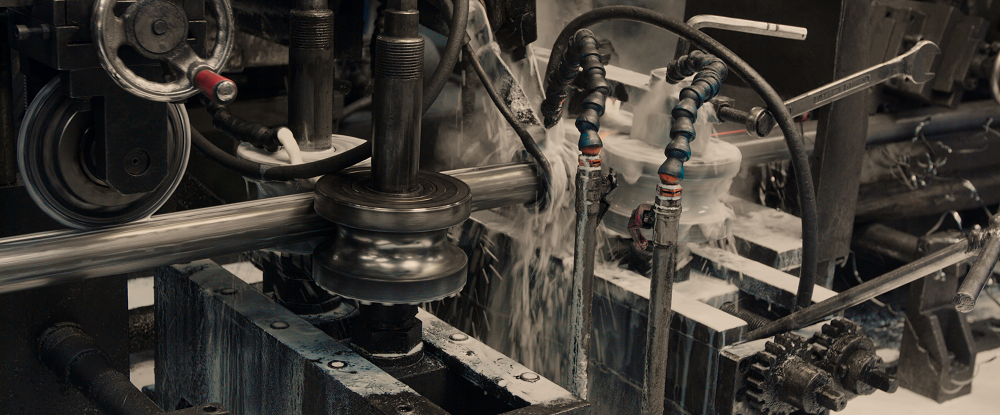In the manufacturing industry, every niche sector has its own complex terminology. The metal forming sector is no different. Encompassing the fields of tube and pipe forming, stamping, and other metal processing operations, metalworkers use specific words to discuss operations, materials, and KPIs. It can be difficult to work in the industry without some familiarity with these terms.
Here are some of the important words and phrases you need to know to succeed on a metal forming shop floor:
Tool, Machinery, Equipment, and Material Terms
- Alloy steel: A steel that contains between 1% to 50% additional alloying elements, including nickel, boron, and manganese.
- Die: A specialized forming tool customized to the exact specifications of the part being produced. Dies are designed to form workpieces into a desired shape or profile. Types of die include stamping dies, drawing dies, and casting dies.
- Metal forming: The wide variety of processes used to turn raw materials into different parts through mechanical deformation.
- Slitter: A cutting tool that converts wide rolls and coils of material into smaller coils. The configurable machine shears metal as it is unwound from a coil to the desired width, and then re-rolls them into custom-sized coils for future use.
- Tensile strength: A measurement that indicates how much force or stress operators can apply to a workpiece without breaking it. It is often measured in terms of pressure, such as megapascals (MPa), pounds per square inch (PSI) and kilopounds per square inch (KSI).
- Workability: The degree of deformation a material can withstand during a metalworking operation without failure. The more ductile a material is, the less pressure needed and more workable it is.
Operation Terms
- Deformation: One of the biggest risks in any metal forming operation is that a workpiece deforms too much and breaks during the forming process, resulting in a scrapped part. Proper material, process, and lubricant selection can lower the risk of failure.
- Flanging: A type of forming or bending process used on sheet metal to achieve a 90-degree angle. Operators use a flanging machine to bend the edge of a workpiece, and either reinforce it or create a connection to additional components.
- Lancing: A cutting process that cuts material without fully separating it into an individual workpiece.
- Punch and die clearance: The space between the cutting edge of a die block and the cutting edge of the attached punch. The actual punch and die clearance distance is determined by the type and thickness of a workpiece material.
- Tube mill: The production of pipe and tubes by roll forming continuous strips of material and welding the edges to form a length of welded tube. Tubes can also be manufactured by a seamless metal forming process with more accuracy and the elimination of the weld.
- Welding: A type of fusion process that merges multiple metal pieces with heat, pressure, and/or electricity. Metal inert gas (MIG), tungsten inert gas (TIG), stick, and friction are common types of welding.
KPI and Productivity Terms
- Corrosion protection: The ability of forming and specialty fluids to prevent rust and other types of corrosion on workpieces and finished products by creating a film or material coating. Corrosion protection can either be short term, to weather the environmental challenges of shipping, or long term, to prevent corrosion on finished products in long-term storage or international logistics. Manufacturers measure corrosion protection based on the amount of time in controlled environmental chambers such as salt spray or humidity cabinets that a specific fluid can resist corrosion.
- Machine uptime: The measure of how much of an operation’s time is actually productive. Manufacturers can determine this percentage by tracking their equipment’s current output or productivity and comparing it to its optimal potential. Strokes per minute is a common measure of machine speed and productivity in the forming and stamping industry.
- Material utilization: Material utilization measures the weight difference between raw material and the finished product from a stamping operation. A higher material utilization rate indicates better efficiency and economy, since more products are manufactured from less material.
- Surface roughness: A measure of part quality, surface roughness quantifies the surface quality of a finished product.
Metal forming is incredibly complex, so this glossary is just a small sampling of some of the most important industry terms. Understanding these keywords will help you navigate metal forming challenges and evaluate solutions, such as choosing the right forming and stamping fluids for your operation. Call +1 800-537-3365 or email us at [email protected] to learn more about WEDOLiT forming fluids or to schedule a site visit from one of our reps.

